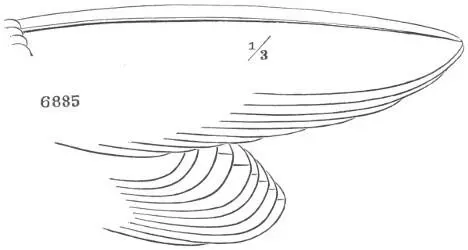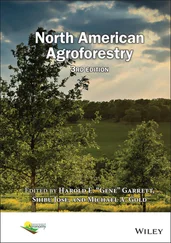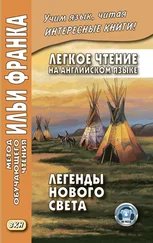Spencer Fullerton Baird - A History of North American Birds, Land Birds. Volume 3
Здесь есть возможность читать онлайн «Spencer Fullerton Baird - A History of North American Birds, Land Birds. Volume 3» — ознакомительный отрывок электронной книги совершенно бесплатно, а после прочтения отрывка купить полную версию. В некоторых случаях можно слушать аудио, скачать через торрент в формате fb2 и присутствует краткое содержание. Жанр: foreign_antique, Биология, foreign_edu, на английском языке. Описание произведения, (предисловие) а так же отзывы посетителей доступны на портале библиотеки ЛибКат.
- Название:A History of North American Birds, Land Birds. Volume 3
- Автор:
- Жанр:
- Год:неизвестен
- ISBN:нет данных
- Рейтинг книги:5 / 5. Голосов: 1
-
Избранное:Добавить в избранное
- Отзывы:
-
Ваша оценка:
- 100
- 1
- 2
- 3
- 4
- 5
A History of North American Birds, Land Birds. Volume 3: краткое содержание, описание и аннотация
Предлагаем к чтению аннотацию, описание, краткое содержание или предисловие (зависит от того, что написал сам автор книги «A History of North American Birds, Land Birds. Volume 3»). Если вы не нашли необходимую информацию о книге — напишите в комментариях, мы постараемся отыскать её.
A History of North American Birds, Land Birds. Volume 3 — читать онлайн ознакомительный отрывок
Ниже представлен текст книги, разбитый по страницам. Система сохранения места последней прочитанной страницы, позволяет с удобством читать онлайн бесплатно книгу «A History of North American Birds, Land Birds. Volume 3», без необходимости каждый раз заново искать на чём Вы остановились. Поставьте закладку, и сможете в любой момент перейти на страницу, на которой закончили чтение.
Интервал:
Закладка:
On the North American continent the only widely distributed species which do not vary perceptibly with the region are Otus brachyotus and O. vulgaris (var. wilsonianus ). Bubo virginianus , Scops asio , and Syrnium nebulosum all bear the impress of special laws in the several regions of their habitat. Starting with the Eastern Province, and tracing either of these three species southward, we find it becoming gradually smaller, the colors deeper and more rufous, and the toes more scantily feathered. Scops asio reaches its minimum of size and maximum depth of color in Florida (var. floridana ) and in Mexico (var. enano ).
Of the other two I have not seen Florida specimens, but examples of both from other Southern States and the Lower Mississippi Valley region are much more rufous, and—the S. nebulosum especially—smaller, with more naked toes. The latter species is darkest in Eastern Mexico (var. sartori ), and most rufescent, and smallest, in Guatemala (var. fulvescens ). In the middle region of the United States, Scops asio (var. maccalli ) and Bubo virginianus (var. arcticus ) are more grayish and more delicately pencilled than from other portions. In the northwest coast region they become larger and much more darkly colored, assuming the clove-brown or sooty tints peculiar to the region. The var. kennicotti represents S. asio in this region, and var. pacificus the B. virginianus . The latter species also extends its range around the Arctic Coast to Labrador, and forms a northern littoral race, the very opposite extreme in color from the nearly albinescent examples of var. arcticus found in the interior of Arctic America.
A very remarkable characteristic of the Owls is the fact that many of the species exist in a sort of dimorphic condition, or that two plumages sufficiently unlike to be of specific importance in other cases belong to one species. It was long thought that these two phases represented two distinct species; afterwards it was maintained that they depended on age, sex, or season, different authors or observers entertaining various opinions on the subject; but it is now generally believed that every individual retains through life the plumage which it first acquires, and that young birds of both forms are often found in the same nest, their parents being either both of one form, or both of the other, or the two styles paired together. 12 12 See Allen, Bull. Mus. Comp. Zoöl., Cambridge, Vol. II, No. 3, pp. 338, 339, where these plumages are discussed at length.
The normal plumage, in these instances, appears to be grayish, the pattern distinct, the markings sharply defined, and the general appearance much like that of species which do not have the other plumage. The other plumage is a replacing of the grayish tints by a bright lateritious-rufous, the pencillings being at the same time less well defined, and the pattern of the smaller markings often changed. This condition seems to be somewhat analogous to melanism in certain Falconidæ , and appears to be more common in the genera Scops and Glaucidium (in which it affects mainly the tropical species), and occurs also in the European Syrnium aluco . As studied with relation to our North American species, we find it only in Scops asio and Glaucidium ferrugineum . The latter, being strictly tropical in its habitat, is similarly affected throughout its range; but in the former we find that this condition depends much upon the region. Thus neither Dr. Cooper nor I have ever seen a red specimen from the Pacific coast, nor do I find any record of such an occurrence. The normal gray plumage, however, is as common throughout that region as in the Atlantic States. In the New England and Middle States the red plumage seems to be more rare in most places than the gray one, while toward the south the red predominates greatly. Of over twenty specimens obtained in Southern Illinois (Mt. Carmel) in the course of one winter, only one was of the gray plumage; and of the total number of specimens seen and secured at other times during a series of years, we can remember but one other gray one. As a parallel example among mammals, Professor Baird suggests the case of the Red-bellied Squirrels and Foxes of the Southern States, whose relationships to the more grayish northern and western forms appear to be about the same as in the present instance.
Genus STRIX, Savigny
Strix , Savigny, 1809 ( nec Linn. 1735). (Type, Strix flammea , Linn.)
Stridula , Sellys-Longch, 1842.
Eustrinx , Webb & Berth. 1844.
Hybris , Nitzsch.

6885⅓
Strix pratincola.
Gen. Char. Size medium. No ear-tufts; facial ruff entirely continuous, very conspicuous. Wing very long, the first or second quill longest, and all without emargination. Tail short, emarginated. Bill elongated, compressed, regularly curved; top of the cere nearly equal to the culmen, straight, and somewhat depressed. Nostril open, oval, nearly horizontal. Eyes very small. Tarsus nearly twice as long as the middle toe, densely clothed with soft short feathers, those on the posterior face inclined upwards; toes scantily bristled; claws extremely sharp and long, the middle one with its inner edge pectinated. Ear-conch nearly as long as the height of the head, with an anterior operculum, which does not extend its full length; the two ears symmetrical?
The species of Strix are distributed over the whole world, though only one of them is cosmopolitan. This is the common Barn Owl ( S. flammea ), the type of the genus, which is found in nearly every portion of the world, though in different regions it has experienced modifications which constitute geographical races. The other species, of more restricted distribution, are peculiar to the tropical portions of the Old World, chiefly Australia and South Africa.
S. flammea.Face varying from pure white to delicate claret-brown; facial circle varying from pure white, through ochraceous and rufous, to deep black. Upper parts with the feathers ochraceous-yellow basally; this overlaid, more or less continuously, by a grayish wash, usually finely mottled and speckled, with dusky and white. Primaries and tail barred transversely, more or less distinctly, with distant dusky bands, of variable number. Beneath, varying from pure snowy white to tawny rufous, immaculate or speckled. Wing, 10.70–13.50.
Wing, 10.70–12.00; tail, 4.80–5.50; culmen, .75–.80; tarsus, 2.05–2.15; middle toe, 1.25–1.30. Tail with four dark bands, and sometimes a trace of a fifth. Hab. Europe and Mediterranean region of Africa … var. flammea . 13 13 Strix flammea , var. flammea . Strix flammea , Linn. S. N. I, 133, 1766, et Auct.-Strickl. Orn. Syn. I, 1855, 178. Strix alba , Scop. Ann. 1st, p. 21, 1768.—Gmel. S. N. 293.—Lath.—Daud.—Lep. and Shaw. Strix guttata , Brehm, Vög. Deutschl. p. 106, 1831. Hab. Europe and Africa.
Wing, 12.50–14.00; tail, 5.70–7.50; culmen, .90–1.00; tarsus, 2.55–3.00. Tail with four dark bands, and sometimes a trace of a fifth. Colors lighter than in var. flammea . Hab. Southern North America and Mexico … var. pratincola .
Wing, 11.30–13.00; tail, 5.30–5.90; tarsus, 2.55–2.95. Colors of var. flammea , but more uniform above and more coarsely speckled below. Hab. Central America, from Panama to Guatemala … var. guatemalæ . 14
Читать дальшеИнтервал:
Закладка:
Похожие книги на «A History of North American Birds, Land Birds. Volume 3»
Представляем Вашему вниманию похожие книги на «A History of North American Birds, Land Birds. Volume 3» списком для выбора. Мы отобрали схожую по названию и смыслу литературу в надежде предоставить читателям больше вариантов отыскать новые, интересные, ещё непрочитанные произведения.
Обсуждение, отзывы о книге «A History of North American Birds, Land Birds. Volume 3» и просто собственные мнения читателей. Оставьте ваши комментарии, напишите, что Вы думаете о произведении, его смысле или главных героях. Укажите что конкретно понравилось, а что нет, и почему Вы так считаете.












